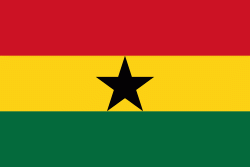Kpando Municipal District (Kpando)
Kpando Municipal District is one of the eighteen districts in Volta Region, Ghana. Originally created as an ordinary district assembly on 10 March 1989 when it was known as Kpando District, until the southern part of the district was split off by a decree of president John Agyekum Kufuor on 19 August 2004 to create South Dayi District; thus the remaining part has been retained as Kpando District. However on 28 June 2012, the southern part of the district was later split off to create North Dayi District on 28 June 2012; while the remaining part was elevated to municipal district assembly status on the same year to become Kpando Municipal District. The municipality is located in the western part of Volta Region and has Kpando as its capital town.
Kpando, the municipal district capital, is about 70 km from Ho, the regional capital. The location of the Municipality places it at a strategic position with potential for fast economic growth and development. The municipality lies within Latitudes 6° 20’ N and 7° 05’ N, and Longitude 0° 17’ E. The Volta Lake, which stretches over 80 km of the coastal line, demarcates the western boundary. The Kpando Municipality shares boundaries with Biakoye District in the north, Afajato South District to the East and North Dayi District in the south.
The population of the Municipality according to 2010 population and housing census stands at 53,736 with 25,904 males and 27,832 females. Kpando Municipal is one of the oldest districts in the Volta Region of Ghana which span into the current Oti Region. Kpando Tokor is a fishing community along the Lake Volta. It also serve as a point to crossing the Lake Volta to Afram plains and other nearby villages using outboard motor powered boats or the government operated pontoon.
Kpando, the municipal district capital, is about 70 km from Ho, the regional capital. The location of the Municipality places it at a strategic position with potential for fast economic growth and development. The municipality lies within Latitudes 6° 20’ N and 7° 05’ N, and Longitude 0° 17’ E. The Volta Lake, which stretches over 80 km of the coastal line, demarcates the western boundary. The Kpando Municipality shares boundaries with Biakoye District in the north, Afajato South District to the East and North Dayi District in the south.
The population of the Municipality according to 2010 population and housing census stands at 53,736 with 25,904 males and 27,832 females. Kpando Municipal is one of the oldest districts in the Volta Region of Ghana which span into the current Oti Region. Kpando Tokor is a fishing community along the Lake Volta. It also serve as a point to crossing the Lake Volta to Afram plains and other nearby villages using outboard motor powered boats or the government operated pontoon.
Map - Kpando Municipal District (Kpando)
Map
Country - Ghana
 |
 |
| Flag of Ghana | |
The Bono state existed in the area that is modern day Ghana during the 11th century. Kingdoms and empires such as Kingdom of Dagbon in the north and the Ashanti Empire in the south emerged over the centuries. Beginning in the 15th century, the Portuguese Empire, followed by other European powers, contested the area for trading rights, until the British ultimately established control of the coast by the 19th century. Following over a century of colonial resistance, the current borders of the country took shape, encompassing 4 separate British colonial territories: Gold Coast, Ashanti, the Northern Territories, and British Togoland. These were unified as an independent dominion within the Commonwealth of Nations. On 6th March 1957, Ghana became the first country in Sub-Saharan Africa to achieve sovereignty. Ghana subsequently became influential in decolonisation efforts and the Pan-African movement.
Currency / Language
| ISO | Currency | Symbol | Significant figures |
|---|---|---|---|
| GHS | Ghanaian cedi | ₵ | 2 |
| ISO | Language |
|---|---|
| AK | Akan language |
| EN | English language |
| EE | Ewe language |
| TW | Twi |















